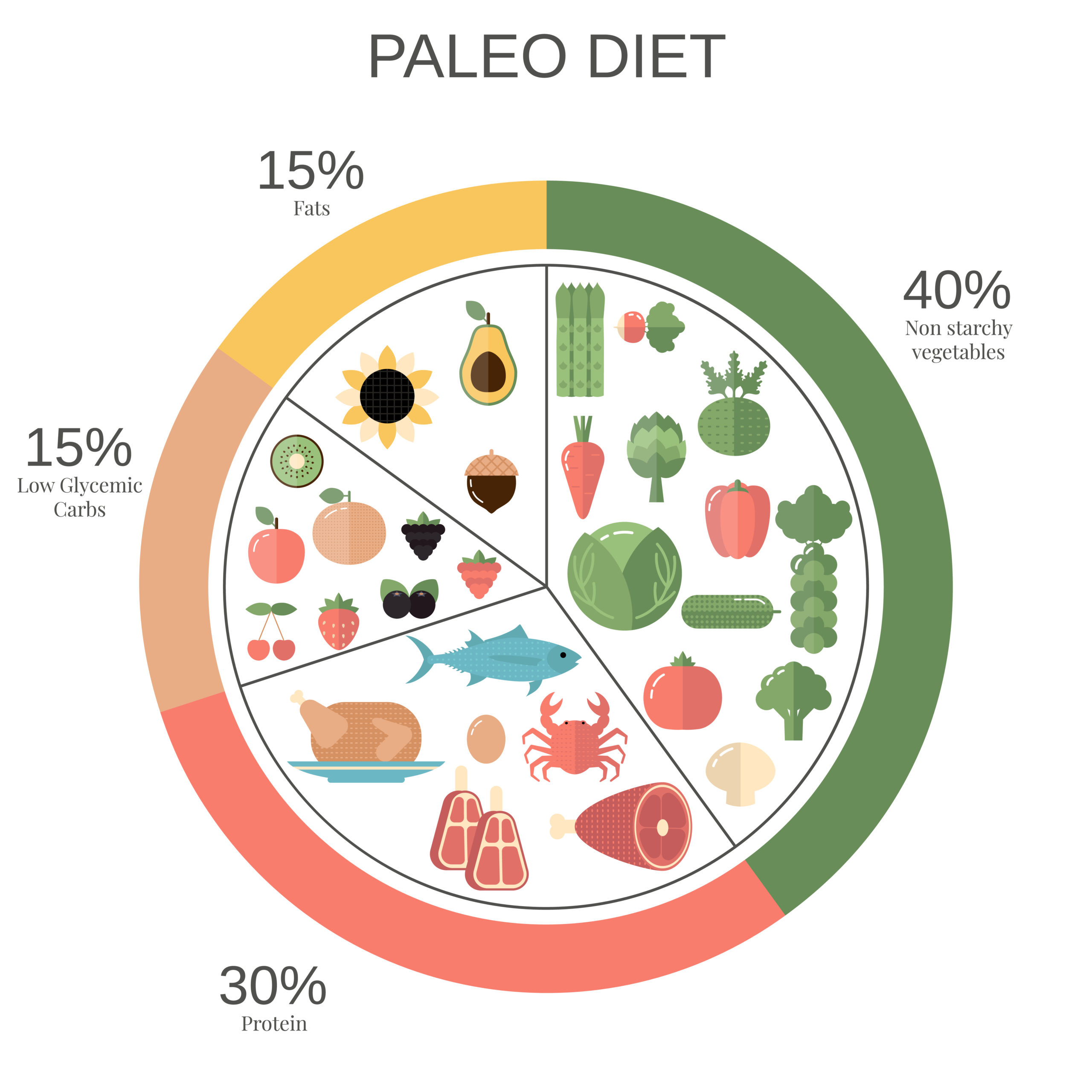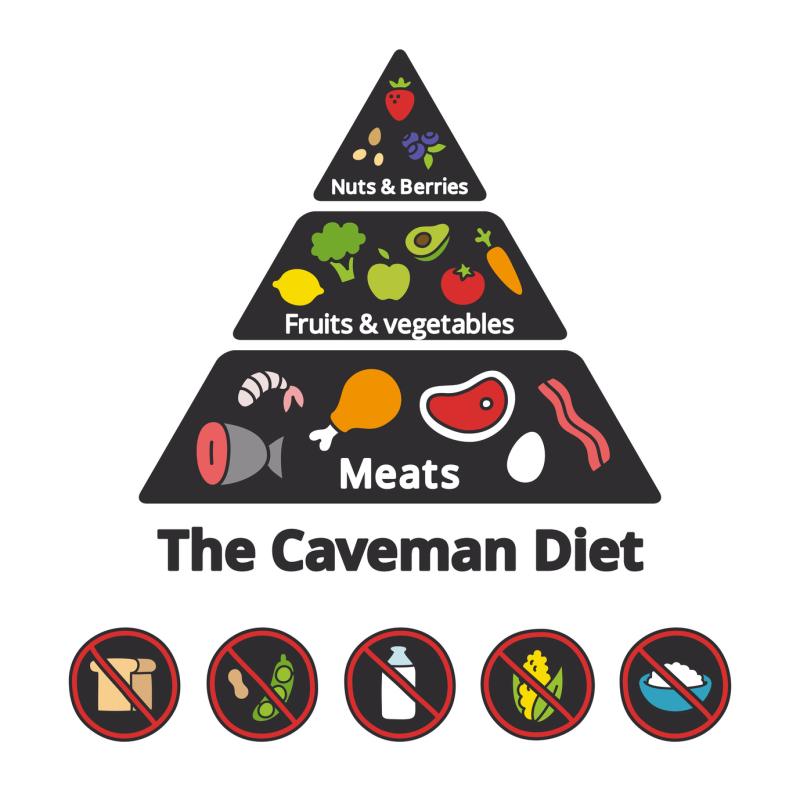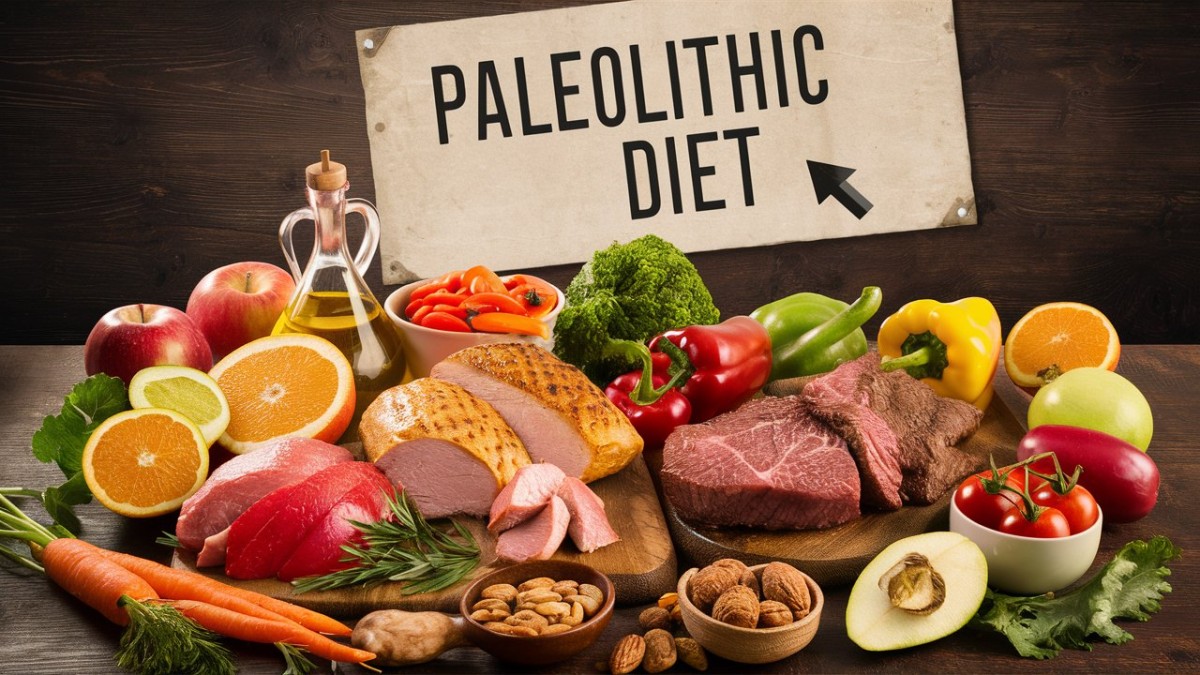Have you ever heard there is a diet called the Paleolithic diet?
No, is there such a diet?
Yes, there is a diet called the Paleolithic diet that most people are not aware of!
But it is one of the healthiest diets that people need to know about as it provides numerous health benefits and weight loss.
Without any further talks, let’s explore more about the Paleolithic diet!
This blog is all about the Paleolithic diet, its benefits, drawbacks, and the key foods that should be included and avoided in the Paleolithic diet.
Paleolithic diet:
 As the name suggests, it is the eating habit of the people living in the Paleolithic era, the time of hunter-gatherers 2.5 million to 10,000 years ago. The Paleolithic diet is also known as the Paleo, Stone Age, or Caveman.
As the name suggests, it is the eating habit of the people living in the Paleolithic era, the time of hunter-gatherers 2.5 million to 10,000 years ago. The Paleolithic diet is also known as the Paleo, Stone Age, or Caveman.
Why do people follow the Paleolithic diet?
So there are many reasons why the Paleolithic diet should be followed but the main purpose or benefit of this diet is to keep you in a healthy weight and reduce the risk of cardiovascular problems.
What are the benefits of following a Paleolithic diet?
As we all know the ancient people in the Paleolithic era were free from most of the health issues such as diabetes, obesity, and cardiovascular diseases. This diet will best help you to keep yourself fit and healthy as the hunter-gatherers were in those days. Here are the benefits of following a Paleolithic diet:
Blood sugar management:
Before the agricultural revolution, there were no issues such as increased blood sugar levels due to their healthy eating habits that are low in refined sugars, and high in fiber. A paleolithic diet can be best helpful in regulating the blood sugar levels which is highly essential to reduce the risk of type-2 diabetes.
Weight management:
Obesity and weight gain are due to the incorporation of unhealthy fats in the form of processed and junk foods which also leads to higher calorie intake. So, the paleolithic diet consists of nutrient-rich foods that are filling in nature thereby reducing calorie intake for a healthy weight management process.
Digestive health:
 The Paleolithic diet consists of the foods that are high in fiber such as fresh fruits and vegetables. These fiber-rich foods support the gut microbiome by promoting digestive health.
The Paleolithic diet consists of the foods that are high in fiber such as fresh fruits and vegetables. These fiber-rich foods support the gut microbiome by promoting digestive health.
Heart health:
The death rate is quite increased due to the increased cases of cardiovascular issues. But people in the Paleolithic era were free from all types of cardiovascular issues due to their healthy diet, so the focus on healthy fats by eliminating trans fats and refined sugars is known to improve cardiovascular health. Also, the diet includes the incorporation of omega-3 fatty acid foods that are best in promoting heart health by reducing the risk of heart disease.
Along with the mentioned benefits it can also help to maintain kidney health and manage high blood pressure levels due to the incorporation of potassium-rich foods.
Also, the lipid profile can be best managed due to the incorporation of unsaturated fats in the form of nuts, olive oil, and avocado.
Are there any side effects of the Paleolithic diet?
Yes, the Paleolithic diet also has a few side effects such as nutritional deficiencies because it restricts a few food groups such as dairy and grains. These are essential as they are good sources of calcium, vitamin D, and vitamin B. Also, the elimination of whole grains will reduce the fiber intake that will disturb gut health.
Key foods of the Paleolithic diet:
Include |
Avoid |
|
Fresh fruits and vegetables provide essential vitamins, minerals, and fiber. |
Whole grains such as wheat, barley, and oats |
|
Healthy oils such as olive oil, coconut oil and walnut oil |
Refined and added sugars |
|
Salts and spices in the form of turmeric, rosemary, sea salt, garlic, etc. |
Vegetables high in starch, like potatoes, corn, and peas |
| Healthy fats like nuts and seeds |
Milk and cheese |
|
Lean meat and eggs to build and repair tissues |
Legumes like peanuts, lentils and beans |
|
Omega-3 fatty acid-rich fish such as mackerel, salmon, and albacore tuna |
Processed foods such as chips and cookies |
Read more on diet
End note:
This is everything you need to know about the Paleolithic diet and the eating habits that were followed in the time of hunter-gatherers. The diet may not be sustainable for everyone due to the adaptation of the present-day environment and the eating habits of people after the agricultural revolution. The above-mentioned are the basic foods that can be included and avoided in the diet plan, do consult with a dietitian who can help you by adjusting your diet plan as per your unique health concerns and your lifestyle habits.
